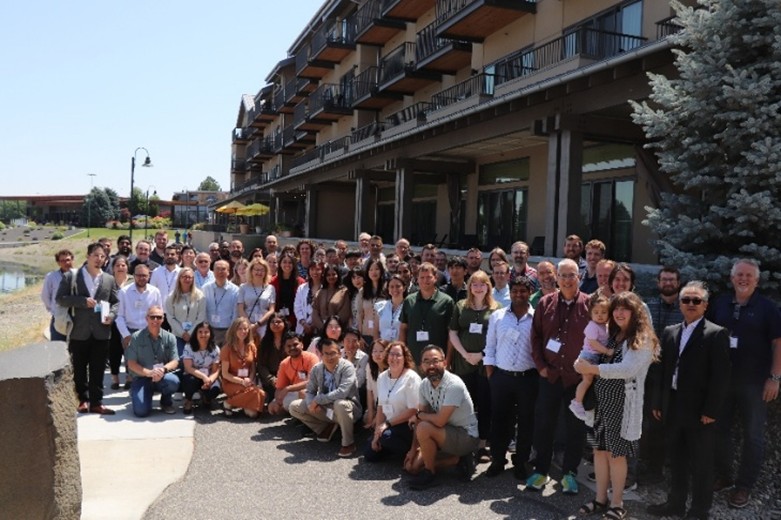Written by Tianna DuPont, WSU Extension, June 27, 2025
Fire blight researchers from around the world met in Washington state this summer for the International Symposium of Fire Blight on Rosaceous Plants. Since 1977, the international fire blight research community has gathered every three years to share recent research, building connections, identifying new ideas and moving the research forward to combat this devastating bacterial disease of apple and pear. The meeting was held in Washington state for the first time this year.
Washington State University research and extension faculty had the pleasure of hosting the event this year led by organizing committee Frank Zhao, Department of Plant Pathology and Tianna DuPont, Agricultural and Natural Resources with committee members Ricardo Delgado Santander, Corina Serban, Bernardita Sallato, Dani Gray and much valued help from Christine Cromar WSU IAREC, Kevin Rimes WSU TFREC and Zhao lab graduate students and post docs.
Researchers came from all over the world and across the United States. International scientists included groups from Germany, South Korea, Poland, New Zealand, Canada, Serbia, Portugal and Norway. Researchers from all the states with large apple and pear growing regions participated including New York, Michigan, Pennsylvania, Washington, California, Oregon, Connecticut, Iowa, Illinois, Connecticut, Virginia, and North Carolina. With 90 participants this was a large and diverse group.
Scientists delved deep into key topics critical to understanding and managing fire blight. Topics included pathogen biology, disease management, molecular biology and genomics, apple breeding and host-pathogen interactions as new technology. Research on exciting new potential management strategies was discussed including field UV applications, new biologicals such as competitive yeasts and auxotrophic bacteria, enzymes which degrade bacterial biofilms, and products which stimulate the plant’s natural defense mechanisms. Scientists have learned key things about the pathogen’s biology including how fast the pathogen moves in the plant and the microbiome of fire blight cankers. New technology highlighted included photographic and hyperspectral image scanning.
As one of world’s most important apple and pear production regions, producing more than 60% of US apples and 50% of US Pears on 190,000 acres fire blight is a particularly important pathogen in the Washington. In warm wet springs the disease can cost orchardists millions in management costs, lost trees and additional labor. For example, in a recent epidemic 88% of pear and 17% of apple acres in Washington were impacted, resulting in $37 million in direct losses recorded and more than $222 million in production losses estimated.
The symposium successfully created a forum for researchers, industry and growers to learn from one-another and build new collaborations. One participant said: “It is such a feast of knowledge sharing, networking, and renewal of friendship. Being able to see the apple production in Washington and talking to stakeholders and learning their failures and successes to manage fire blight is also a wonderful experience.”
Thank you to orchard tour hosts Keith Oliver and Keith Valeska and to organizations who provided sponsorship: Okanogan Specialty Fruits, Fine, Biosafe, Washington Tree Fruit Research Commission, Gowan, Wilbur Ellis, Certis, Columbia Ag Services and UPL.

Additional Information
Fire Blight of Apple and Pear | WSU Tree Fruit | Washington State University
Contact
Tianna DuPont
Associate Professor, Extension Specialist, Agriculture and Natural Resources
tianna.dupont@wsu.edu
(509) 713-5346
Frank Zhao
Professor, Plant Pathology
youfu.zhao@wsu.edu
(509) 786-9284
